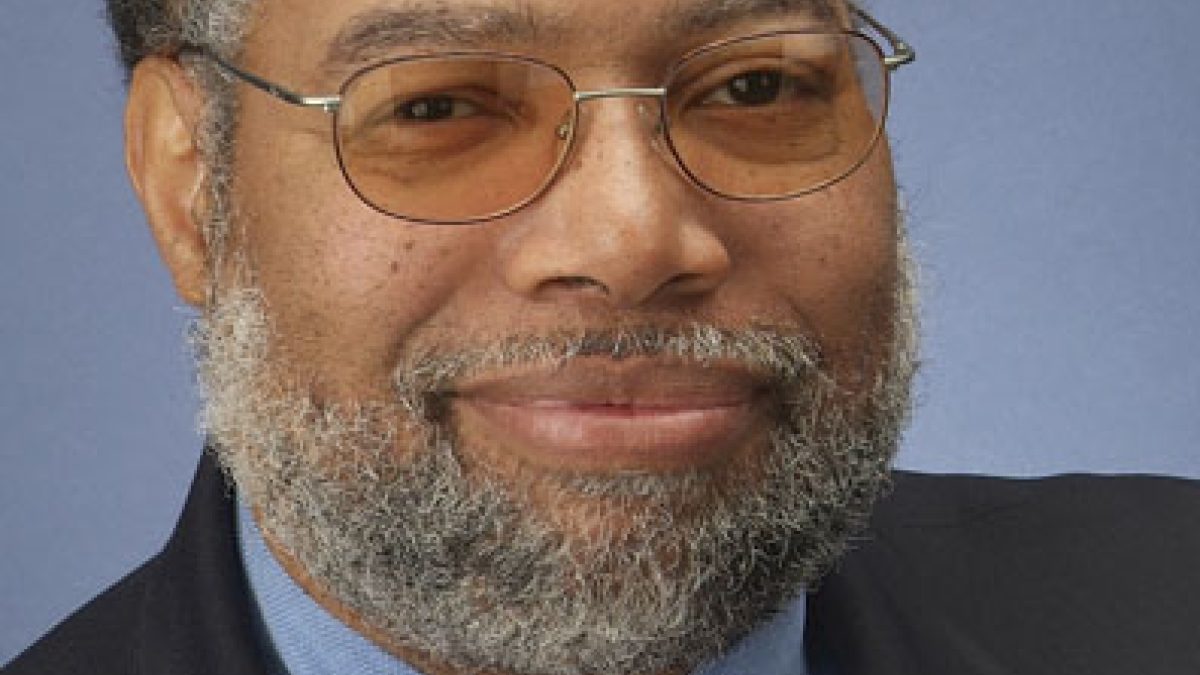Smithsonian museum director to speak at ASU

7 p.m. Dec. 1, Old Main, Carson Ballroom
The founding director of the National Museum of African American History and Culture — the Smithsonian’s 19th museum — is tasked with building a special place to help Americans remember its history.
“In many ways, there are few things as powerful and as important as a people, as a nation that is steeped in its history,” said director Lonnie Bunch, in a vision statement about the new museum, which is scheduled to open in 2015 on the National Mall in Washington, D.C.
Bunch, a public historian, author, curator and educator, will discuss the challenge of creating a national museum at 7 p.m. Dec. 1 at Arizona State University, Old Main, Carson Ballroom, on the Tempe campus. Presented by the College of Liberal Arts and Sciences and the Sandra Day O’Connor College of Law, the lecture is free and open to the public. Seating is first-come, first-served; more information is at http://clas.asu.edu/lonniebunch.
In discussing the new museum, Bunch notes it “is not a museum that celebrates black history solely for black Americans. Rather, we see this history as America’s history. The museum will use African American history and culture as a lens into what it means to be an American.”
Bunch is a highly accredited historian and scholar who has spent 30 years in the museum field where he is regarded as a leading figure in the cultural-historical community. He was named one of the 100 most influential museum professionals in the 20th century by the American Association of Museums. Last year, he was named one of the 150 most influential African Americans by Ebony magazine.
A former Smithsonian curator, Bunch was selected in 2005 by the Smithsonian Institution to establish this new museum.
“Lonnie Bunch, one of the nation’s leading public historians, is making history by helping give life to, and directing, what will become the preeminent African American museum and cultural center in the United States,” said ASU’s associate professor of history Matthew C. Whitaker.
As its director, Bunch is working to set the museum’s mission, organize the fundraising and membership, create the collections, and oversee the design and construction of the museum, which is set to be built on a five-acre site on the National Mall between the Washington Monument and the National Museum of American History. To bring attention to the museum before its completion, Bunch is working on traveling exhibitions and public events involving panel discussions, seminars and workshops.
“We are most fortunate to have Lonnie Bunch, the intellectual architect of one of the nation’s newest museums, visiting ASU,” said Quentin Wheeler, ASU vice president and dean of the College of Liberal Arts and Sciences. “Museums play a vital and unique role in society. They serve as a collective memory of our heritage and preserve physical evidence of historical events that have made us who we are and that have contributed to our modern world. They are necessary centers of scholarship, research and learning.”
In addition to the public lecture, Bunch will visit with classes and faculty while at ASU.
“Lonnie Bunch provides students with a stellar example in response to the question we are most often asked: What one can do with a degree in African American Studies? Our faculty and students are looking forward to the opportunity to meet with him to learn more about the new Smithsonian museum and about the career of museum curator,” said Professor Stanlie James, faculty head for African and African American Studies in ASU’s School of Social Transformation.
Myles Lynk, a professor in ASU’s Sandra Day O’Connor College of Law, believes Bunch has a challenging task ahead of him as founding director of a new Smithsonian museum. “I am delighted that he has chosen to visit ASU and share with us his vision for this new museum, his appreciation of the heritage it will celebrate, and that African-American history is indisputably American history,” Lynk said.
Bunch was president of the Chicago Historical Society, one of the oldest historical museums in the country, when he was selected to be the founding director of this new Smithsonian museum. While working for the Chicago Historical Society, he led a successful campaign to transform the institution in celebration of its 150th anniversary.
Previously, Bunch served in a number of positions at the Smithsonian, including associate director for curatorial affairs at the National Museum of American History where he managed a staff of nearly 200 and led the team that created the permanent exhibition, “American Presidency: A Glorious Burden.” He also was an education specialist at the Smithsonian’s national Air and Space Museum.
Bunch is a published author who has written about topics as varied as museum management, the impact of funding and politics on American museums, black towns in America, blacks in the military and the American presidency.
As an educator, Bunch has taught at the American University in Washington, D.C., University of Massachusetts in Dartmouth, and George Washington University. He received graduate and undergraduate degrees in African American and American history from the American University.
The National Museum of African American History and Culture was established by an Act of Congress in 2003. During the pre-building phase, the museum is producing publications, hosting public programs and assembling collections. It is presenting exhibitions at other museums across the country and at its own gallery at the Smithsonian’s National Museum of American History. An array of interactive programs and educational resources is available on the museum’s Web site at http://nmaahc.si.edu.
MEDIA CONTACT
Carol Hughes, carol.hughes@asu.edu
480-965-6375
College of Liberal Arts and Sciences

